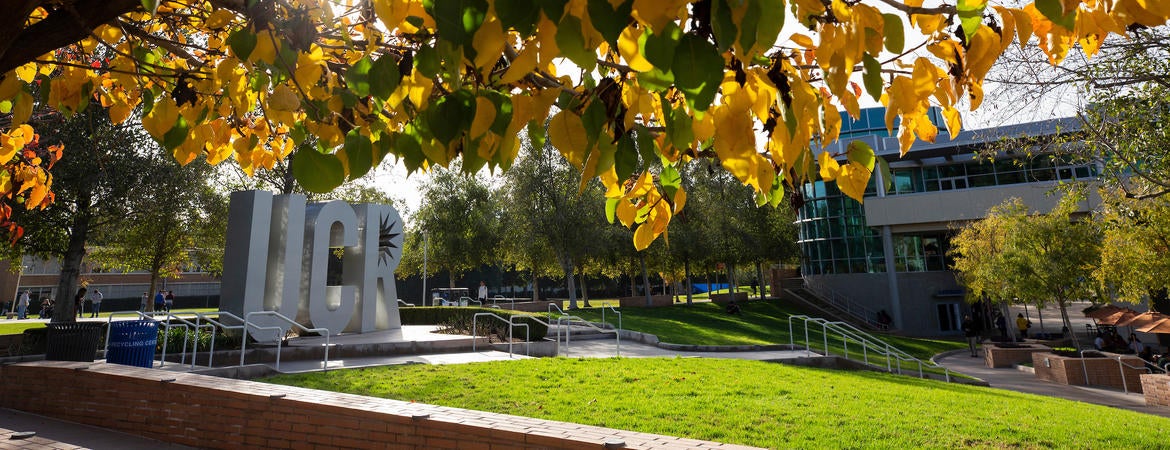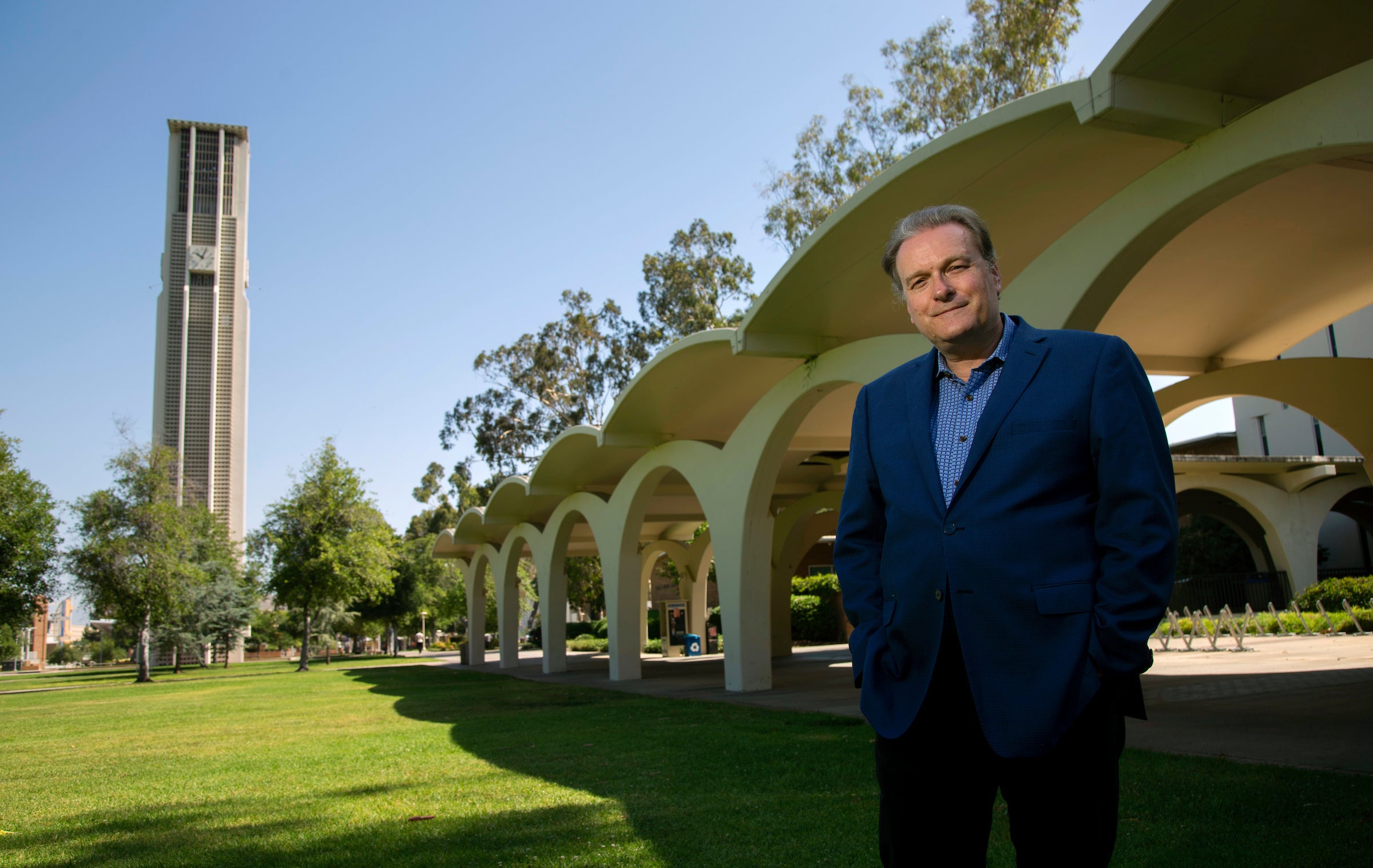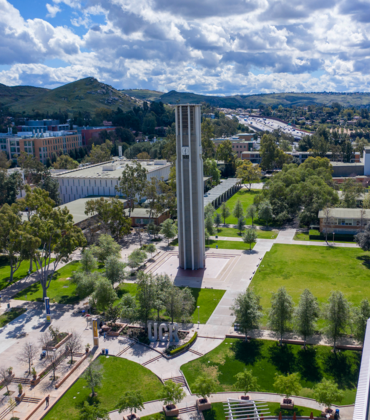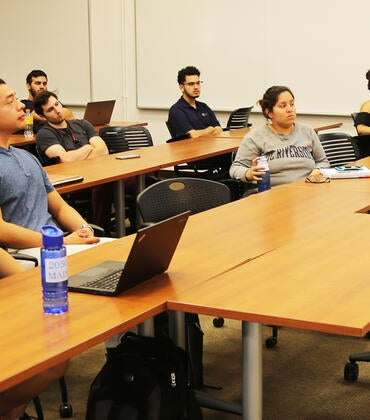
Since the campus shutdown in mid-March, teams across UC Riverside have worked diligently to develop a robust educational technology framework to serve the needs of students and faculty, opting to invest in multiple effective remote teaching and learning solutions to keep the UCR community safe as the campus remains closed through the COVID-19 pandemic.
UCR made a rapid transition to remote learning at the onset of the pandemic during the final weeks of the winter quarter, quickly moving courses to the learning management system iLearn and implementing Zoom to facilitate interactions with faculty members and students. Now, six months later, UCR’s Exploration Center for Innovative Teaching & Engagement, or XCITE, in collaboration with Information Technology Solutions, or ITS, and other campus partners, have added a number of new platforms and services in preparation for the fall quarter and to better serve the campus community through the duration of the shutdown.
“Over 97% of our classes are still going to be remote,” said Richard Edwards, director of XCITE. His team has been instrumental in facilitating the transition to remote learning and adoption of new technologies. “In order to support that, we knew we wanted to really upgrade our technology infrastructure.”
While iLearn will continue to serve as the learning management system for the majority of courses in fall, the campus is in the process of transitioning to Canvas, a cloud-based platform that Edwards said offers a wider range of features. XCITE began piloting the software during the second session of summer courses and will be expanding Canvas to 50 courses in fall. More courses will be added each subsequent quarter over the next two years, with the goal of retiring iLearn by summer 2022. Edwards said the switch was in response to requests from faculty members for an option other than iLearn, and that interested faculty members can be added to a waitlist for the software starting in winter quarter.
A major addition to the slew of new technologies implemented since March is the integrated video platform YuJa. While Zoom will continue to be used for live lectures, YuJa offers a much-needed solution for lecture capturing, allowing faculty members to record their lectures with accompanying slides and whiteboard demonstrations, which students may view on their own time, Edwards said. Other key features include unlimited video storage, automatic video captioning, and the option to insert quizzes throughout the recorded lecture to ensure student engagement, among other tools.
“Zoom is a very effective method for synchronous communication, but faculty members were missing a couple key elements in video-forward education that YuJa solves for the campus,” Edwards said.
Finding more ways to facilitate remote proctoring has also been a priority during the shutdown, and the implementation of YuJa has also provided instructors an additional proctoring solution. Through YuJa, instructors can have students record both themselves and their screens while taking exams, which will automatically upload for instructors to review after. The Respondus software LockDown, which prevents students from accessing other websites and files on their computers during exams, was also purchased to help secure test taking. UCR’s homegrown solution to live remote proctoring, now called R’Proctoring, also remains an option for instructors. Faculty members can learn more about the various proctoring solutions on the Keep Teaching website, which continues to serve as an informational hub for instructors with the latest information regarding remote instruction during the shutdown.
The campus has also invested in the software GradeScope, which allows faculty members to more effectively grade online assignments, Edwards said. The software was already widely used by UCR’s Bourns College of Engineering and the College of Natural and Agricultural Sciences but has since been made available to all colleges. The platform offers a suite of tools for more streamlined grading of paper-based, digital, and code assignments as well as statistics to better gauge students’ understanding of questions and topics.
The communication platform Slack will be available to most of the campus community starting in winter. The software will begin piloting in fall, with priority going to the roughly 5,000 incoming first-year students as a means of providing an avenue for new students to communicate with one another, as well as with instructors. When fully implemented, every student and faculty member will have an enterprise-level Slack account with various channels set up to facilitate collaborating and socializing.
“Most of these students have never been to our lovely campus,” Edwards said. “They haven’t met our faculty or worked out at the rec center. We wanted a university response so that student government and activity groups can form and students can communicate with each other beyond email and maybe text circles they create.”
XCITE has also been working with ITS to assist individual departments and instructors to better accommodate remote learning, including increasing creative suite licensing and improving remote labs, as well as offering personalized assistance to faculty members with course redesign. XCITE has also been working with the provost’s office to support the limited number of labs and performing arts courses that have been granted special permission to meet on campus, most of which will also provide a remote option.
“Any one of these technologies would have been a good year for UCR, and we got all of them in the last six months,” Edwards said, noting the investment of new remote teaching solutions was made possible by the support of many campus partners. “We’re committed to giving faculty and students the tools they need to thrive during remote teaching because we know the virus is in charge, so we’ve got to do our best as a university to meet the challenge, and I think we’ve done that very well.”
To ensure faculty members can make the most out of these new technologies and services, XCITE has developed numerous training webinars available on the Keep Teaching website, with two to three offered each week. A new self-paced, six-module course called “The Art and Craft of Remote Teaching” was also recently made available for those looking to learn how to improve remote teaching during the pandemic. Originally intended for UCR faculty, the course has already seen over 600 sign-ups and has now been extended to area K-12 teachers.
Efforts have also continued to ensure students are prepared for remote learning and have the necessary technologies to be successful. All incoming students were surveyed to confirm they have suitable devices and Wi-Fi access prior to starting fall quarter. For any student still needing a device, the Loan2Learn program remains available. Students are also able to submit a ticket for help with Wi-Fi through the Keep Learning website, which has served as the remote learning hub for students since the shutdown.
Among other training and informational resources for students, the Keep Teaching website will soon host a new video series called “Hey Scotty Bear,” which the XCITE team helped produce. The 10-episode, student-focused series will consist of short videos featuring UCR’s mascot Scotty offering tips on how to be successful during remote learning, with each video also connecting to a handout on Keep Learning. The series will debut toward the end of September.
Edwards credits the UCR community with coming together and making the transition to remote learning successful. He notes support from the chancellor, interim provost, finance team, ITS, and UCR Libraries, among many others, made it possible.
“Those of us on the inside feel the campus responded in a big way to this challenge,” he said. “A lot of campuses did not step up as much as UCR did, and the credit comes from the top down. You really need the campus to put their muscle behind it and we are very thankful they did. No one wanted this crisis, no one asked to close our front doors and go fully remote, but if we must do this, let’s do it right.”
Header Image: (UCR/Stan Lim)



